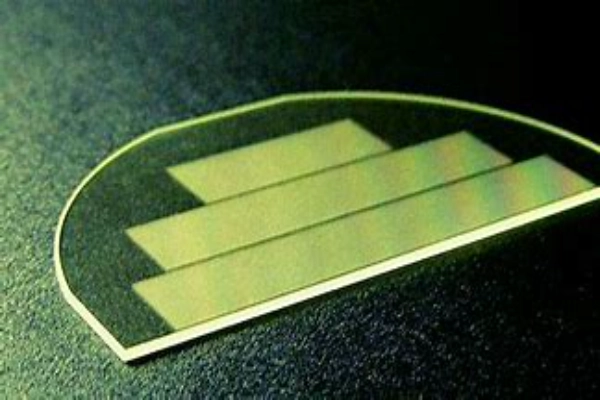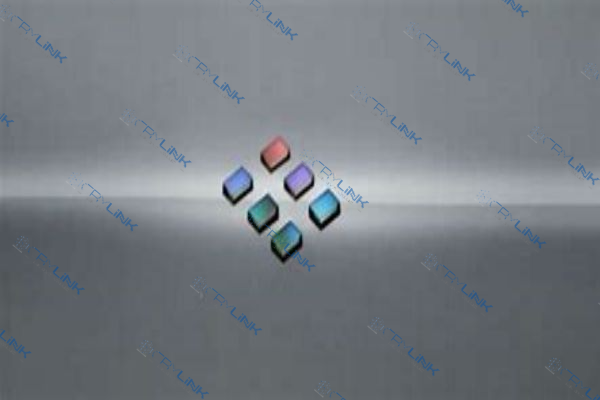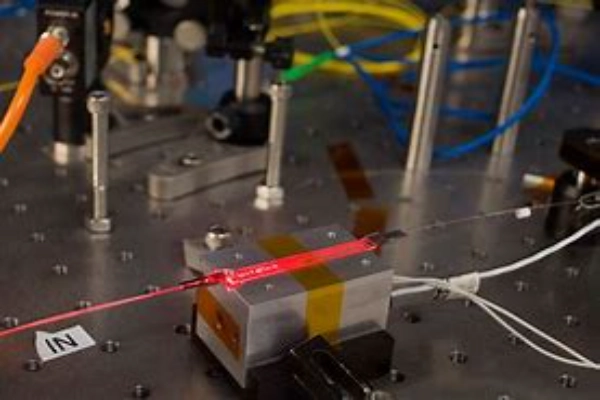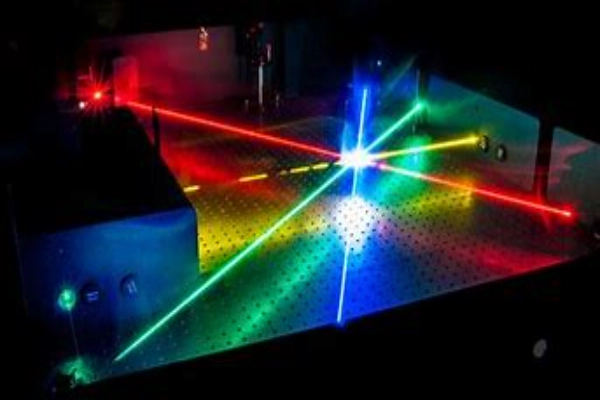Introduction
In the evolving landscape of photonics and optics, periodically-poled crystals stand as a beacon of cutting-edge innovation. Characterized by their distinct spatial configurations, these crystals present unmatched benefits in nonlinear optical conversion mechanisms. This comprehensive analysis elucidates the nuances of these crystals and their pivotal role in contemporary optical systems.

The Essence of Quasi-Phase Matching
Quasi-phase matching is a cornerstone technique in nonlinear optical conversion, particularly when utilizing periodically-poled crystals. To grasp its profound impact, it’s essential to understand the complexities of light wave interactions and the hurdles introduced by phase discrepancies.
Quasi-phase matching is a groundbreaking approach designed to maximize the efficacy of nonlinear optical processes. Ideally, multiple light waves interacting within a designated medium would seamlessly generate new wavelengths. However, these waves often confront phase mismatches, leading to diminished conversion efficiency.
Quasi-phase matching ingeniously addresses this by introducing periodic inversions in the nonlinear medium’s orientation, realigning the waves. This ensures optimal energy exchange, enhancing conversion efficiency and expanding the nonlinear process’s operational bandwidth.
Incorporating quasi-phase matching with periodically-poled crystals has significantly elevated optical technology standards. These crystals, renowned for their unique configurations and nonlinear attributes, are further enhanced by quasi-phase matching, heralding a new era in optics.

Periodically-Poled Crystals: Spotlight on PPLN & PPRTA
In the vast realm of nonlinear optics, periodically-poled crystals have emerged as the linchpins, driving innovations and setting new benchmarks. Among these, PPLN (Periodically Poled Lithium Niobate) and PPRTA (Periodically Poled Rubidium Titanyl Arsenate) are the standout performers, each with its unique attributes and applications.
PPLN (Periodically Poled Lithium Niobate) PPLN
- Inherent Phase-Matching Capabilities: PPLN is renowned for its intrinsic ability to maintain harmony among interacting light waves. This ensures that the waves remain in sync, facilitating efficient frequency conversion across a broad spectrum.
- Durability: One of PPLN’s most commendable attributes is its resilience. The crystal can endure significant strain, showcasing its high damage threshold, making it a reliable choice for rigorous optical applications.
- Versatility: PPLN’s wide transparency range renders it adaptable to a myriad of nonlinear optical applications. From telecommunications to advanced laser sources, PPLN’s influence is pervasive, emphasizing its pivotal role in modern optical systems.
PPRTA (Periodically Poled Rubidium Titanyl Arsenate) PPRTA
- Tailored for Specific Spectral Regions: While PPLN is a jack-of-all-trades, PPRTA is the master of some. It is specifically designed to excel in certain spectral regions where other crystals might underperform.
- Thermal Robustness: PPRTA’s standout feature is its unparalleled resilience to temperature variations. Unlike many optical materials that might degrade or lose efficiency under elevated temperatures, PPRTA maintains its optimal performance, making it invaluable in applications with fluctuating thermal conditions.
- Phase-Matching Properties: PPRTA, like PPLN, boasts commendable phase-matching properties. However, its unique composition and structure make it a preferred choice for specialized applications that demand a more nuanced approach.

Applications of Periodically-Poled Crystals
Periodically-poled crystals, with their unique nonlinear properties, have carved a niche for themselves in the world of advanced optics. Their transformative impact on modern-day photonics is evident in a myriad of applications that harness their unparalleled capabilities.
Frequency Doubling
- The Magic of Conversion: At the heart of frequency doubling lies the ability to convert input light to produce light at double its initial frequency. Periodically-poled crystals, with their inherent nonlinear properties, make this conversion not only feasible but also highly efficient.
- Implications: The ability to achieve frequency doubling has profound implications, especially in laser technology. By accessing specific wavelengths, researchers and engineers can unlock potential applications that were previously out of reach.
Optical Parametric Amplification
- Amplifying Weak Signals: In the intricate world of optics, there are moments when weak signal beams require amplification without the introduction of noise or distortion. Periodically-poled crystals rise to this challenge with finesse.
- Dual Outcomes: Alongside the amplified signal, a new idler wave is also generated within the crystal. This simultaneous generation, achieved without compromising the signal’s integrity, underscores the versatility of periodically-poled crystals in handling multifaceted optical tasks.
Terahertz Wave Generation
- Bridging the Gap: Terahertz radiation, situated between microwave and infrared, holds immense potential, especially in imaging and communication. However, generating these waves efficiently has been a longstanding challenge.
- The Role of Periodically-Poled Crystals: These crystals, with their distinct properties, have emerged as game-changers in terahertz technology. They facilitate the generation of terahertz waves with unparalleled efficiency, potentially revolutionizing sectors like airport security screenings and high-speed communication systems.

Overcoming Phase Matching Limitations
- The Age-Old Challenge: Traditional optical systems often grapple with phase mismatches, leading to reduced conversion efficiency. Periodically-poled crystals present an innovative solution to this age-old challenge.
- Enhancing Bandwidth: By periodically adjusting the crystal’s orientation, these crystals ensure phase coherence between interacting waves. This not only augments conversion efficiency but also broadens the system’s operational bandwidth, making it invaluable in applications like broadband communication.
Elevating Nonlinear Optical Devices with Periodically-Poled Crystals
The integration of periodically-poled crystals into optical systems has ushered in a new era of advancements in the field of nonlinear optics. These crystals are not mere components; they are the driving force behind the evolution of cutting-edge optical devices.
Enhanced Performance and Efficiency
- Optimal Conversion: Periodically-poled crystals, with their unique nonlinear properties, ensure that light wave interactions achieve maximum conversion efficiency. This translates to devices that can perform at their peak, delivering results that were previously thought to be unattainable.
- Broadened Functionalities: The inherent properties of these crystals, especially when combined with techniques like quasi-phase matching, expand the operational bandwidth of optical devices. This means that systems can handle a wider range of wavelengths, making them more versatile and adaptable to various applications.

Durability and Resilience
- High Damage Threshold: Crystals like PPLN are known for their ability to withstand significant strain without showing signs of degradation. This robustness ensures that optical devices remain durable and can function optimally even under rigorous conditions.
- Thermal Stability: Certain periodically-poled crystals, such as PPRTA, exhibit remarkable resilience to temperature fluctuations. This ensures that devices maintain their performance even in environments with varying thermal conditions.
Pioneering New Applications
- Broad Spectrum Applications: With the integration of periodically-poled crystals, optical devices can now cater to a broader spectrum of applications. From telecommunications to advanced laser sources, the influence of these crystals is far-reaching.
- Innovative Solutions: Periodically-poled crystals have been instrumental in addressing challenges that have plagued the optical industry for years. For instance, they offer novel solutions to overcome phase matching limitations, ensuring that interacting waves maintain coherence and achieve optimal conversion efficiency.
Setting the Stage for Future Innovations
- Research and Development: The integration of periodically-poled crystals into optical devices has spurred further research and development in the field of nonlinear optics. As scientists and engineers continue to explore the potential of these crystals, we can anticipate a slew of innovations that will redefine the boundaries of photonics.
- Catalysts for Change: Periodically-poled crystals are not just passive components; they actively shape the trajectory of optical advancements. Their role in elevating the standards of nonlinear optical devices positions them as catalysts for change in the world of advanced photonics.
Conclusion
Periodically-poled crystals are redefining nonlinear optical conversion. By leveraging quasi-phase matching and addressing phase matching challenges, these crystals are setting the stage for state-of-the-art nonlinear optical devices, pushing the boundaries of photonics.
FAQs
- What are periodically-poled crystals and why are they significant in nonlinear optics?
Periodically-poled crystals are distinguished by their specific spatial arrangements and play a pivotal role in nonlinear optical conversion processes. Their unique properties offer unparalleled advantages, making them essential in modern-day optical systems. - How does quasi-phase matching enhance the efficiency of nonlinear optical processes?
Quasi-phase matching is a technique that addresses the challenge of phase mismatches in light wave interactions. By introducing periodic inversions in the orientation of the nonlinear medium, it realigns the waves, ensuring they interact in phase. This optimization ensures that the conversion efficiency reaches its maximum potential and broadens the operational bandwidth of the nonlinear process. - What are the primary differences between PPLN and PPRTA in the realm of periodically-poled crystals?
PPLN (Periodically Poled Lithium Niobate) is known for its broad spectrum phase-matching capabilities and is versatile in various nonlinear optical applications. PPRTA (Periodically Poled Rubidium Titanyl Arsenate), on the other hand, is tailored for specific spectral regions and exhibits resilience to temperature fluctuations, making it ideal for specialized applications. - How do periodically-poled crystals contribute to terahertz wave generation?
Periodically-poled crystals, with their unique nonlinear properties, can efficiently generate terahertz waves. These waves have vast potential applications in imaging, especially in medical diagnostics, and communication. The crystals’ ability to generate these waves efficiently could revolutionize sectors like airport security screenings and high-speed communication systems. - How are periodically-poled crystals elevating the standards of nonlinear optical devices?
By integrating periodically-poled crystals into optical systems, nonlinear optical devices achieve enhanced performance, broader functionality, and increased durability. These crystals are pivotal elements driving the next wave of optical innovations, ensuring devices operate at peak efficiency and offer better versatility.

Frank
Frank graduated from the University of Shanghai for Science and Technology, majoring in optics. As a technical engineer at Crylink Company, he deeply understands crystal materials and laser components.
Related Video(s) with this Article
Related Product(s) with this Article
Related Application(s) with this Article

